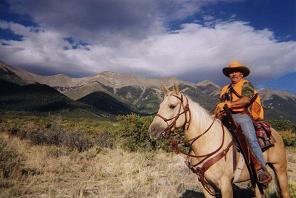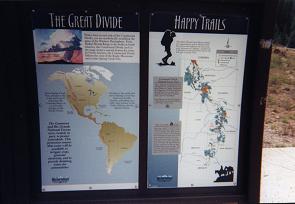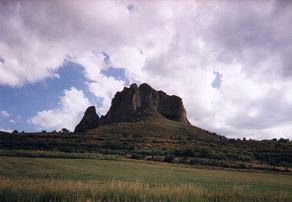
Note the Bushnell brand binoculars.
|
Colorado September 2005 Trip Report © September 2005 Adam Helman |
| (Click on any image for enlargement.) |

|
|
Bushnell Peak and Raul. Note the Bushnell brand binoculars. |

|
|
A descriptive kiosk at Spring Creek Pass. |

|
|
Needle Rock is featured enroute to the southern approach for Mount Lamborn. |